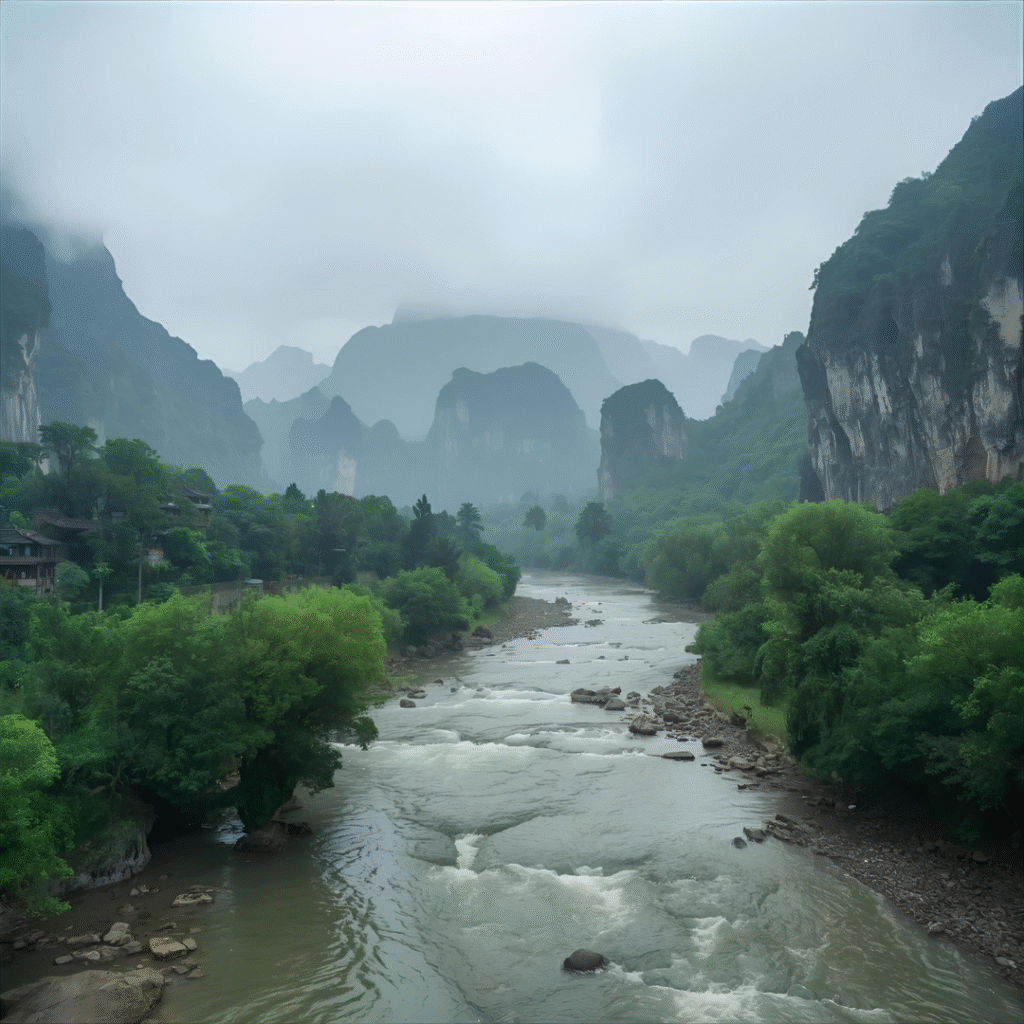“Anheihe” is a name surrounded by mystery and beauty. Some describe it as a remote, breathtaking region deep in the south of China, while others see it as an aesthetic idea — a symbol of peace, nature, and heritage. Whether real or imagined, Anheihe has captured attention worldwide for its blend of serenity, untouched landscapes, and cultural richness.
1. The Geographic Side of Anheihe
In several travel accounts, Anheihe is said to lie in the southern part of China, near the border with Vietnam. The region is described as being filled with green valleys, bamboo forests, waterfalls, and mountains that stretch across the mist.
Natural Beauty
The area is often portrayed as a paradise for nature lovers — with karst limestone peaks, hidden caves, and rivers that sparkle under the morning sun. It’s said to be home to many rare plants, birds, and small animals, making it a sanctuary of biodiversity.
Traditional Villages and People
Anheihe’s charm lies not only in its scenery but also in its people. The local communities, often from ethnic minority groups such as the Zhuang or Yao, are known for their deep connection to nature and long-held traditions. Handwoven textiles, pottery, and bamboo crafts are part of daily life. Festivals celebrating the harvest, nature, and ancestral spirits are celebrated with music and dance.
Ancient Roots
Some stories say that Anheihe’s origins date back over two thousand years. It is said to have ancient temples, pagodas, and ruins from old dynasties that whisper stories of forgotten times. While official records are limited, the tales about its long history continue to fascinate travellers and historians alike.
2. The Concept of “Anheihe” as an Aesthetic
Beyond geography, “Anheihe” has also become an idea — a poetic expression. On digital platforms, artists and writers use the name “Anheihe” to represent peace, nostalgia, and the meeting of the old world with the new.
It’s an aesthetic that blends misty mountains, flowing rivers, simple village life, and quiet reflection. “Anheihe” has come to symbolize slow living — a world where people live close to nature, away from the chaos of modern life.
This interpretation makes Anheihe more than a location — it’s a feeling, an atmosphere, a dream that artists and storytellers use to express beauty and meaning.
3. Comparing the Two Interpretations
There are two main ways to understand Anheihe:
-
As a real remote region in southern China with natural and cultural wonders.
-
As a conceptual or creative idea, celebrated in art and storytelling.
Both versions share the same heart — peace, nature, and simplicity. The name might not appear clearly on official maps, but it continues to exist in imagination and memory, showing how powerfully place and story can merge.
4. If You Visit Anheihe (or Its Real-World Equivalent)
For those inspired by the legend of Anheihe, southern China offers several remote, nature-rich regions that reflect its spirit.
What to Do:
-
Hike through green valleys and bamboo forests.
-
Explore waterfalls and caves hidden in the hills.
-
Visit small villages and learn traditional crafts.
-
Stay in eco-lodges or homestays to experience local life.
Best Time to Go:
-
Spring (March–May) for blooming flowers and fresh air.
-
Autumn (September–November) for clear skies and golden rice terraces.
Travel Tips:
-
Bring comfortable walking shoes and light gear.
-
Learn a few local phrases and respect local customs.
-
Travel sustainably — avoid littering and support small local businesses.
5. The Meaning Behind Anheihe
Anheihe represents more than a destination. It stands for balance — between humans and nature, old and new, imagination and reality.
It invites us to slow down, to listen to the quiet, and to find beauty in the ordinary. Whether you see it as a village hidden among the misty mountains or a concept born from creativity, Anheihe reminds us that peace and wonder can still be found if we seek them.
Conclusion
Anheihe is both a mystery and a message. It shows how stories and places can blend — how a simple name can become a symbol of everything serene, authentic, and beautiful.
Perhaps it exists, perhaps it doesn’t. But the spirit of Anheihe — the harmony of culture, nature, and imagination — is something real that lives on in those who dream of simpler, purer worlds.

